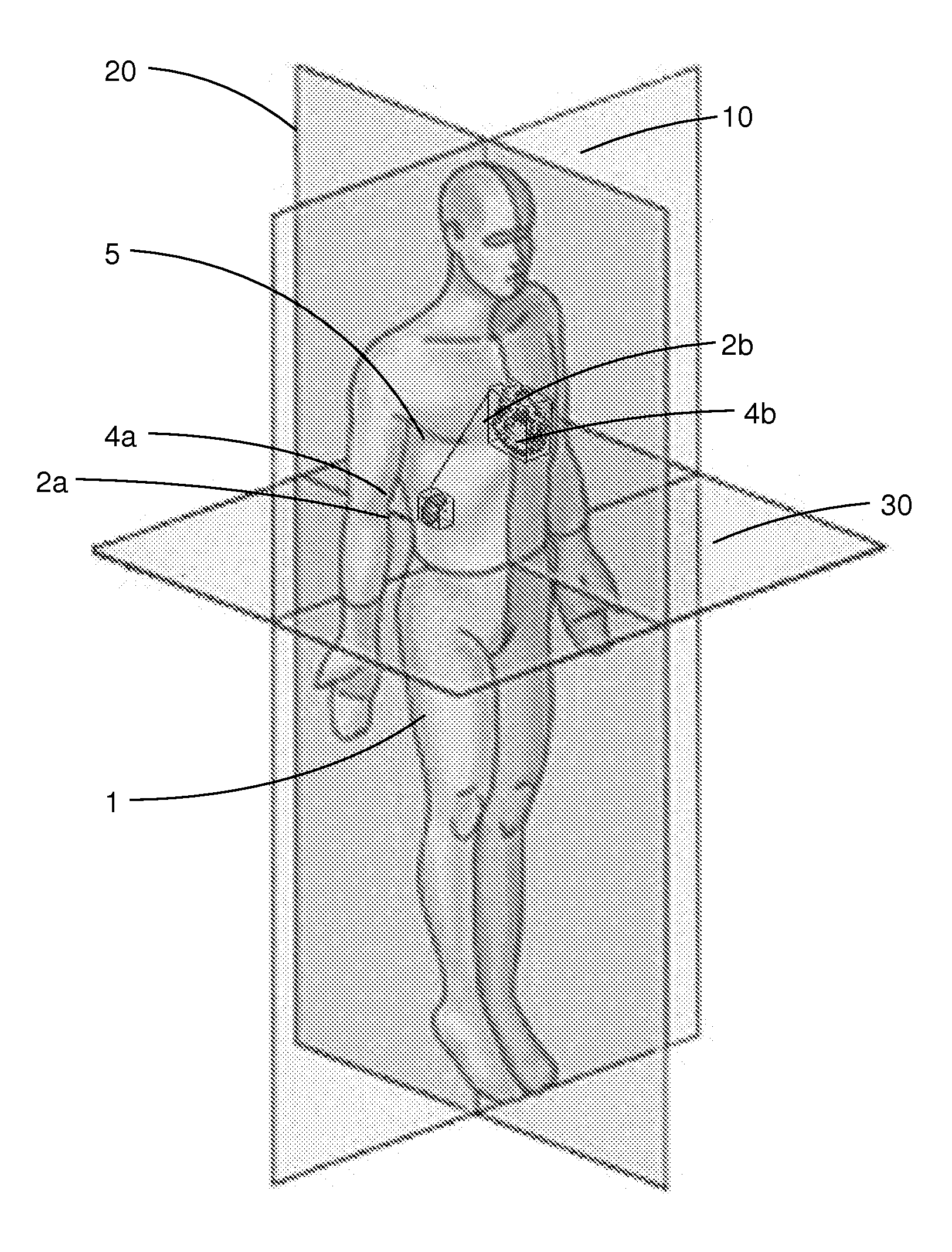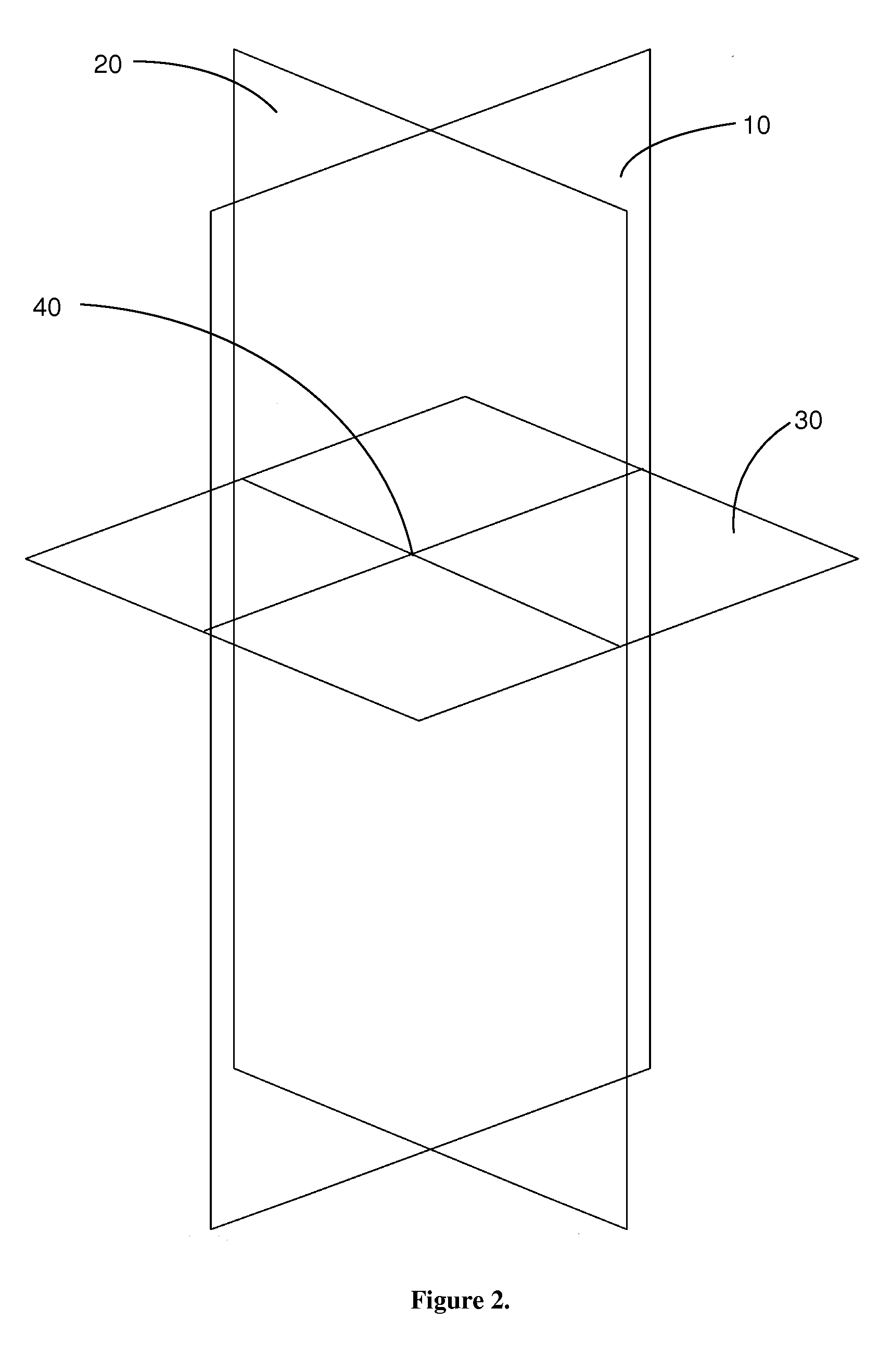Cartesian human morpho-informatic system
a morpho-informatics and cartesian technology, applied in the field of 3d cartesian coordinate systems, can solve the problems of large workload in medicinal diagnostics, inefficiency, and inability to accurately identify human morphology, and achieve efficient and accurate scanning protocols, reduce unnecessary radiation exposure, and reduce the number of scans a person.
- Summary
- Abstract
- Description
- Claims
- Application Information
AI Technical Summary
Benefits of technology
Problems solved by technology
Method used
Image
Examples
example
[0039]The present invention's ability to quantitatively describe the location of a structure in or on the human body is illustrated in the following example. Arbitrarily-chosen coordinates are utilized to define the location from intersection point 40 (0, 0, 0). As seen in FIG. 3, Sagittal plane 20 (X-axis) is defined from 50 (uppermost limit) to −50 (the lowermost limit); Transverse plane 30 (Y-axis) defined as 20 (right-most lateral limit) and −20 (the left-lateral-most limit); and Coronal plane 10 (Z-axis) defined as 10 (anterior-most limit) and −10 (the posterior-most limit). Body 1 is defined by body bounding box 3. Anatomical structure 2 is defined by structure bounding box 4. The points of the bounding box are determined on the coordinate system. In this example, the location of structure 2 would have a coordinate of (approximately) 10, 10, 10 (X, Y, Z). In this example, structure 2 is located approximately ⅕ of the distance upward on the coronal plane (X-axis) from the trans...
PUM
 Login to View More
Login to View More Abstract
Description
Claims
Application Information
 Login to View More
Login to View More - R&D
- Intellectual Property
- Life Sciences
- Materials
- Tech Scout
- Unparalleled Data Quality
- Higher Quality Content
- 60% Fewer Hallucinations
Browse by: Latest US Patents, China's latest patents, Technical Efficacy Thesaurus, Application Domain, Technology Topic, Popular Technical Reports.
© 2025 PatSnap. All rights reserved.Legal|Privacy policy|Modern Slavery Act Transparency Statement|Sitemap|About US| Contact US: help@patsnap.com



